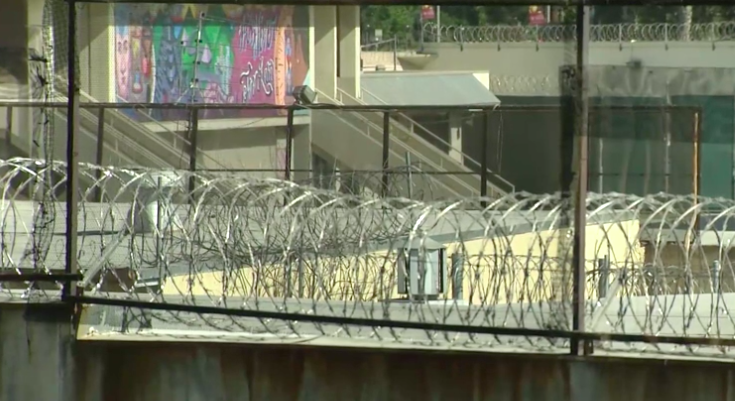The number of unhoused people in Los Angeles County has increased by 4.1% since 2020, as officials warned of potential for “significant increases” in the years ahead as pandemic-era safety nets end, according to the latest point-in-time tally released Thursday by the Los Angeles Homeless Services Authority.
In the city of Los Angeles, the figure is up 1.7% from 2020. The count tallied 69,144 homeless people in the county and 41,980 in the city.
“These results are disheartening,'' Los Angeles County Supervisor
Janice Hahn said. “This count may contain signs of progress, but no one is going to celebrate when there are this many people sleeping on our streets.”
Get top local stories in Southern California delivered to you every morning. Sign up for NBC LA's News Headlines newsletter.
The count, which took place from Feb. 22-24, is an annual, mandated means for LAHSA to obtain an accurate count of the number of unhoused people in the county.
This year's count was the county's first since 2020, as last year's was canceled when LAHSA determined it was not safe to gather 8,000 volunteers amid stay-at-home orders and curfews due to COVID-19. The county received an exemption from the U.S. Department of Housing and Urban Development and was not required to conduct a 2021 count.
City Council President Nury Martinez said the numbers confirm “what city leaders have long known, that the city of Los Angeles simply cannot solve the homeless crisis on its own.''
Local
Get Los Angeles's latest local news on crime, entertainment, weather, schools, COVID, cost of living and more. Here's your go-to source for today's LA news.
The count may have been affected by the Omicron surge, especially the youth count with many youth centers closed, LAHSA officials said. Officials collected around 1,780 fewer surveys from youth between the ages of 18 and 24, and nearly 2,000 fewer surveys from families compared to 2020.
Officials also warned that the system was in a unique situation this year, with more one-time federal pandemic assistance programs ending. That could lead to more housing insecurity and fewer resources for rehousing systems to respond, according to Kristina Dixon, acting co-executive director of LAHSA.
“Because homelessness is a lagging indicator, it is possible that future homeless counts could show significant increases,'' Dixon said.
One discrepancy saw the number of tents, vehicles and makeshift shelters increase by 17% from 2020, but just a 1% increase in unsheltered homelessness. Dixon explained that officials paused encampment clean-ups during the pandemic, leading to more tents on the streets. And as more people moved inside shelters, some left their tents and belongings behind in encampments.
Jennifer Hark Dietz, CEO of People Assistance the Homeless, pointed to housing initiatives such as Project Roomkey and Project Homekey for helping curb unsheltered homelessness.
“The pandemic could have resulted in a massive increase in homelessness overall,'' Dietz said. ``We must make sure that people can connect to interim housing and a range of supportive services, but at the end of the day if the affordable housing stock is not there, people will either remain in shelters or outdoors, with no permanent home in sight.”
Councilman Kevin de León, who serves as chair of the council's Homelessness and Poverty Committee, said the results show that the city's efforts to move unhoused residents into shelter is working, but also “point to the tremendous failures in our system at all levels of government ... that have left important populations behind.”
Homelessness among Hispanic and Latino residents saw the biggest spike of all demographics, with a 26% increase since 2020 and now representing nearly half of people experiencing homelessness in the county.
County Supervisor Hilda Solis called the rise in unhoused Latinos concerning, noting that “It is imperative that the county better understand and address the root causes that are driving increases in Latino homelessness.”
Black people remain overrepresented in the data, comprising nearly 30% of the homeless population despite making up 9% of residents.
Nearly 40% of people experiencing homelessness are also experiencing serious mental illness or substance abuse, the data showed. County Supervisor Kathryn Barger believed those numbers are actually higher, citing a UCLA study showing the figure is closer to 50%.
“Our solutions must take a whole person approach and equitably provide both housing and healing,” Barger said.
According to the 2020 count, the county's homeless population increased by 12.7% over the previous year, while the city of Los Angeles’ homeless population jumped by 14.2%.
In January 2019, Los Angeles County had 58,936 people experiencing homelessness, but by January 2020, the number rose to 66,433. The city of Los Angeles counted 36,165 in 2019 and 41,290 in 2020.
“While it is too soon to know what this year's results will mean long term, the numbers are suggesting that there is a flattening of the curve,” Dixon said.
West Los Angeles saw the biggest decrease in unhoused residents, with a 23% decline since 2020. The Antelope Valley was the only other region that saw a decline -- it was down by 3%. The Harbor region and South Los Angeles both saw double-digit percentage point increases from 2020, at 18% and 12%, respectively.
Councilman Mitch O'Farrell, whose district is in West Los Angeles, touted his approach to building affordable and supportive housing and outreach services.
“The city still has a way to go,” O'Farrell said. “But our approach in the 13th District works, and the numbers prove it. Let's replicate this across Los Angeles.”
Rep. Karen Bass, the frontrunner in the race for Los Angeles mayor, called the numbers ``terrible'' in a news briefing and repeated her promise to declare a state of emergency on her first day in office, if elected, ``so City Hall finally treats homelessness as the massive disaster that it is.''
LAHSA was originally scheduled to release the results earlier this summer, but postponed it in July because of a delay by HUD in validating the data.
The effort is essential to understanding how large the region's homelessness crisis has become. It must be conducted by Continuum of Care providers to receive federal funding through the U.S. Department of Housing and Urban Development.
Due to the pandemic, volunteers conducted the count this year by driving around the area, instead of some volunteers fanning out on foot.
Other changes included moving deployment sites outdoors, moving volunteer training sessions online, encouraging volunteers to minimize cross-group interactions, requiring masks and encouraging volunteers to be vaccinated.
Volunteers also used an app to collect and submit information electronically for the first time, instead of using clipboards and writing down their information physically.
This year's count was originally planned for Jan. 25-27, but the county's surge in COVID cases, fueled by the Omicron variant, forced a one-month postponement.



